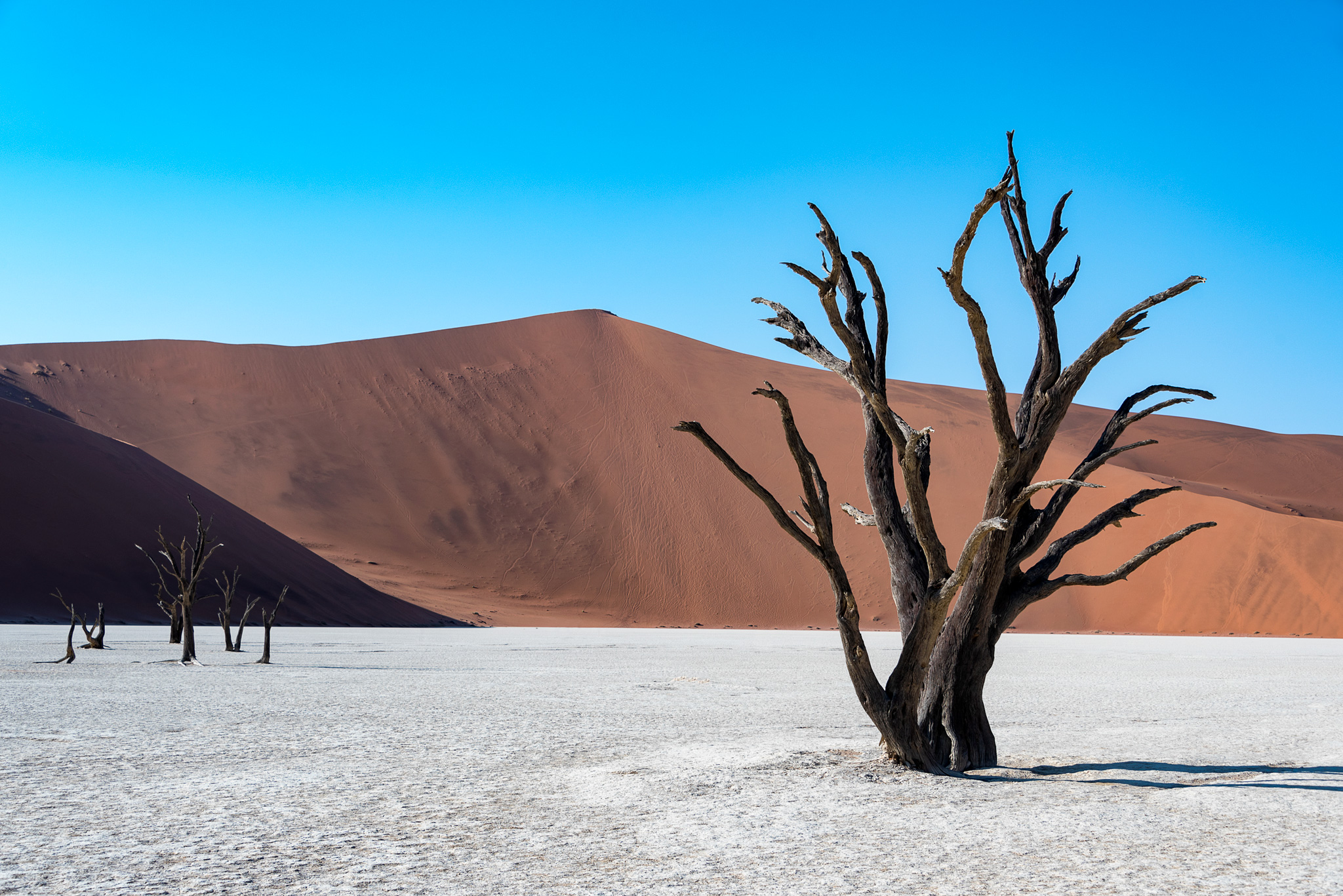Beautiful and Surreal Sossusvlei, Namibia
I have been fortunate to travel to many of the world’s major deserts such as the Sahara and the Arabian Desert. All of them beautiful in their own way. But far the most scenic desert that I have experienced is the Namib desert in Namibia, South Africa. Of the over 31,000 square miles of the Namib Desert, I have only seen a small portion, but perhaps the visually striking. The area known as the Sossusvlei is a salt and clay pan, surrounded by some of the biggest dunes in the world. Due to the level of oxidized iron deposits in the dunes, they present in a strong orange or red color.
Origins of the Vlei
The term Sossusvlei is of Afrikaans/Nama origin. The term “vlei” (pronounced flay) refers to a shallow lake or marsh. Sossus means “no return”, hence the English translation is “Dead-end lake” or dead-end vlei. When you travel there it is evident why, although you won’t find any water. You travel down a dry valley that starts out wide and becomes increasingly narrow. Imposing sand dunes, in v formation, bound the valley. At the end of the valley is the area, pictured above, called Deadvlei – sometimes referred to as Dead-End Vlei. Getting to this part requires a four wheel drive vehicle, but there is a shuttle service provided from the car park to the vlei if you don’t happen to have a four-wheeler.
Deadvlei is an incredibly fascinating geographical phenomenon. The floor of the vlei (which is occasionally flooded in the rare years when there is substantial rain) is made of white, salty deposits that are like concrete under the feet. Trapped in this rock-solid base layer are petrified Acacia trees that form haunting silhouettes against the orange backdrop of the towering dunes.
How to Get There
Sossusvlei is definitely a destination. Getting there is not like traveling on the autobahn’s of Germany or the highways of the North America. The easiest is by light aircraft to one of the many small landing strips. But that is only practical if you are staying at a hotel or lodge that provides package tours to the vlei. Otherwise, you drive – over miles of dirt road, some very, very bumpy.
Where We Stayed
We stayed at the Sossusvlei Desert Lodge part of the &Beyond Group of luxury lodges. I have been fortunate to stay at quite a few of these in South Africa, Kenya and now Namibia. This ranks as one of my favorites. It is small and the level of intimate service is amazing. We will do a complete post on this lodge, so watch for that. As part of our package costs, they organized the trip the Dead Vlei, including breakfast, Out of Africa style, among the dunes. If you are a hardcore photographer, you may consider staying at the Sossus Dune Lodge or the Sesriem Camp Site for at least one night. These give you early morning and late afternoon access to the area before the park gates are opened to the public.
This place is a desert, so we recommend not going in the heat of summer!
On a personal note, this trip was special to me because my father was born in Namibia (South-West Africa at the time). Despite growing up in Southern Africa, I had never been to Namibia. The ranger allocated to us by the Sossusvlei Desert Lodge pointed out to me that in some respects I had come home. He welcomed me as a fellow Namibian.

Related
Piers van der Merwe
To find out more, including how to control cookies, see here: Cookie Policy

